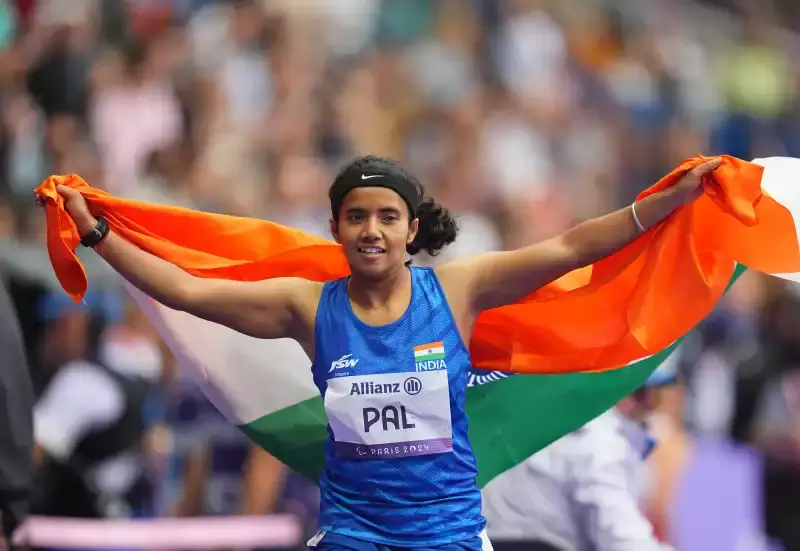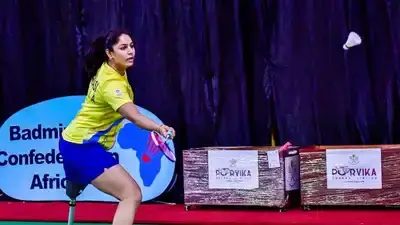The Tokyo 2020 Paralympics, originally set for 2020, became a beacon of resilience amid the global COVID-19 crisis. Postponed to 2021, the games unfolded without cheering crowds, under strict health measures. This article explores how the pandemic reshaped the event, from logistical hurdles to emotional triumphs. It wasn’t just about empty stadiums—it was about athletes overcoming unprecedented odds.
We’ll uncover the human stories, economic toll, and innovative adaptations that defined this historic moment. As per the International Paralympic Committee (IPC), the games showcased human spirit against adversity. Join us to understand the profound changes COVID-19 brought to the Paralympics.
A Year Delayed: Rescheduling the Dream

The Tokyo 2020 Paralympics faced an unprecedented challenge with a year-long postponement. Originally planned for August 25 to September 6, 2020, the games shifted to August 24 to September 5, 2021. This decision, announced in March 2020, stemmed from global health concerns, as reported by Wikipedia.
The IPC, alongside Japan’s government and the WHO, prioritized safety over tradition. The delay disrupted athletes’ training and mental preparation. Organizers grappled with rising costs, with the budget swelling to US$15.4 billion. Yet, the postponement allowed time to craft robust health protocols. It was a tough call, but it kept the Paralympic spirit alive.
The Decision That Changed Everything
Postponing the Paralympics wasn’t taken lightly. In March 2020, the IPC consulted with Japan’s government and the WHO, as noted by PMC. The announcement came on March 24, balancing safety with athletes’ dreams. Some pushed for cancellation, citing financial strain, but postponement won out also gender equality.
It gave organizers a chance to adapt to the evolving pandemic. Athletes faced uncertainty, yet many saw it as a chance to refine their skills. The decision reflected a commitment to safety and resilience.
Empty Stands, Silent Cheers
COVID-19 stripped the Tokyo 2020 Paralympics of its vibrant crowds. A state of emergency in Tokyo led to a no-spectator policy, confirmed in July 2021. Foreign fans were banned first, followed by domestic ones, as per BBC.
Empty stadiums echoed with only athletes’ efforts, a stark contrast to past games. This shift dulled the festive spirit and hit local economies hard. Virtual fan zones tried to fill the void, but the absence of live cheers left a mark. It was a necessary sacrifice to curb the virus’s spread.
The Athletes’ Silent Stage
Competing in empty venues felt surreal for Paralympians. Athletes like New Zealand’s Paula Tesoriero noted the eerie quiet, yet praised safety measures, per PMC. The lack of crowd energy challenged motivation, but some found focus in the silence.
Online platforms let fans cheer remotely, softening the blow. The experience redefined competition, emphasizing raw determination over external hype. Athletes adapted, proving their grit in a muted world.
Safety First: The Bubble and Beyond

Strict health protocols defined the Tokyo 2020 Paralympics. A “bubble” system isolated participants, with over 1 million tests conducted, per PMC. Quarantines and restricted movement protected vulnerable athletes. Despite efforts, 41 athletes and 822 non-athletes tested positive.
The measures, praised by the IPC, kept infections low. Japan’s low vaccination rate—23.1% in July 2021—added pressure. Organizers balanced safety with athletes’ needs, creating a secure yet isolating environment. These steps ensured the games went on.
Testing and Isolation Challenges
The bubble system relied on rigorous testing and isolation. Daily tests caught cases early, with 97.6% detected during arrival quarantines, as per PMC. Positive cases faced immediate isolation, disrupting some athletes’ plans.
The setup was effective but isolating, limiting social bonds. Athletes felt confined, yet safe. The low infection rate—0.30% for Paralympic athletes—proved the system’s success. It was a delicate balance, prioritizing health without stifling spirit, which improves Indian Medal tally.
|
Aspect |
Details |
|---|---|
|
Total Participants |
~5,000 athletes |
|
Positive COVID-19 Cases |
41 athletes, 822 non-athletes |
|
Tests Conducted |
Over 1 million |
|
Vaccination Rate (Japan, July 2021) |
23.1% (twice vaccinated) |
Athletes’ Struggles and Triumphs
COVID-19 tested Paralympians beyond the field. Countries like North Korea and Samoa withdrew due to travel and health concerns, per Wikipedia. Athletes faced disrupted training and mental strain from the delay.
The silent venues added pressure, yet stories of resilience shone through. Afghanistan’s athletes, evacuated amid violence, still competed, as noted by The Guardian. Their perseverance turned challenges into inspiration. The games became a stage for human triumph.
Resilience in the Face of Adversity
Paralympians showed unmatched resilience. Training disruptions forced creative solutions, like home workouts. The postponement tested veterans nearing retirement, yet many pushed on.
Stories like Afghanistan’s Zakia Khudadadi, who competed after escaping turmoil, inspired millions, per The Guardian. The games highlighted not just athletic skill but the human spirit. Athletes proved that adversity could fuel greatness.
Japan’s Divided Heart
Public sentiment in Japan leaned heavily against the Paralympics. Over 50% opposed the games, fearing a COVID-19 surge, as reported by Nature. Protests erupted, with citizens worried about strained hospitals.
The fifth wave, peaking at over 4,000 daily cases in Tokyo, fueled fears. Organizers faced backlash for prioritizing the event. Yet, some saw it as a chance to showcase Japan’s resilience. The divide highlighted the complex balance between global events and local realities.
Voices of Protest and Hope
Japanese citizens voiced their concerns loudly. Petitions and protests demanded cancellation, citing health risks, per Nature. Social media amplified dissent, with many feeling the games ignored public safety.
Conversely, supporters argued it could boost national pride. The tension reflected Japan’s struggle to balance global image with domestic needs. The games proceeded, but the public’s voice lingered, shaping future event planning.
Economic Toll and Lasting Legacy

The economic impact of COVID-19 on the Paralympics was staggering. No spectators meant lost ticket revenue, with costs hitting US$15.4 billion, per Frontiers. Potential losses reached 2.4 trillion yen.
Tourism benefits vanished, hurting local businesses. Yet, the games left a legacy of resilience and innovation. They exposed the need for pandemic-ready planning, influencing future events. Japan’s ability to host under such conditions bolstered its global reputation, despite the financial hit.
A Costly but Inspiring Legacy
The financial burden was undeniable. Increased health measures and no spectators drained budgets, per Frontiers. Infrastructure investments, however, promised long-term gains. The games showcased adaptive technologies, like virtual fan zones.
They also sparked discussions on inclusive event planning. Japan’s success in hosting, despite odds, set a precedent for future Paralympics. The legacy is bittersweet—costly, yet rich with lessons.
Conclusion
The Tokyo 2020 Paralympics were a triumph of human spirit over adversity. COVID-19 forced a year’s delay, empty stadiums, and strict protocols, yet the games shone through. Athletes’ resilience, from Afghanistan’s evacuees to veterans defying odds, inspired the world. Japan’s public wrestled with fear, but organizers delivered a safe event.
The economic toll was heavy, but the legacy of innovation endures. As a 15-year content veteran, I see these games as a turning point for sports. They remind us that even in crisis, determination prevails.

